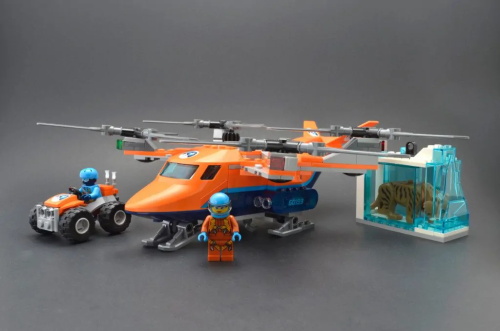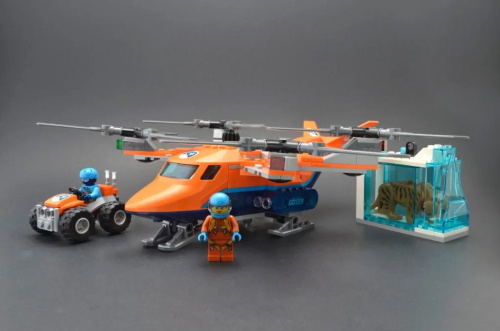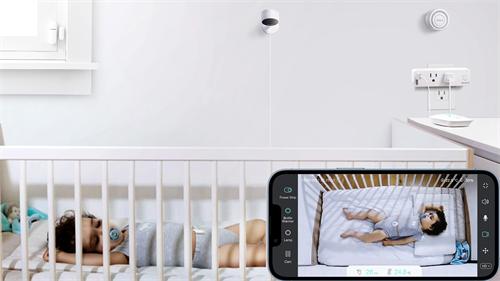LEGO vs. 4M: Which STEM Toys Boost Creativity Best?

When it comes to choosing toys for kids, “Does it spark creativity?” has become one of the most important questions for parents and educators. After all, a good toy isn’t just about keeping kids busy — it’s about getting them to think, imagine, and maybe even see the world differently. That’s where STEM toys really shine.
Why are STEM toys worth recommending?
STEM (Science, Technology, Engineering, and Math) toys usually require kids to build, assemble, or do experiments on their own. That means they have to use their brains — to understand principles, solve problems — and in the process, they’re improving their logical thinking and hands-on skills. The best part? There’s usually no single "right" way to play with STEM toys. Kids are free to imagine, test, and explore different ideas, which is a great way to stretch their thinking.
As technology like AI and virtual reality keeps advancing, the ability to combine knowledge from different fields and solve problems creatively is becoming more and more valuable. That’s why parents are paying more attention to these educational-but-fun tools. But among all the STEM toys out there, how do LEGO and 4M compare when it comes to boosting creativity? Here’s my personal experience and comparison as a parent.
LEGO: A Creative Playground for Builders
Our family has been into LEGO for over five years. From the first chunky blocks to advanced Technic sets, I’ve watched my kid go from simply following instructions to building totally original creations. One day, he built a “space junk recycling station” using just basic bricks — and explained every part’s function in detail. It wasn’t copied from a guidebook — it came straight from his imagination.
The biggest strength of LEGO is how open-ended it is. There’s no fixed formula. Every build is a chance to create something new. Even just using basic pieces with free guides from the LEGO website, you can keep exploring new themes without spending much. And it’s great for parent-child interaction. For example, when we’re building gear systems, I’ll ask, “Why do these gears need to mesh together?” Questions like that help kids understand mechanical ideas and express their thoughts better.
LEGO also works really well for group play. Kids can team up to create big projects, which is great for learning how to cooperate and communicate.
4M: A Spark for Scientific Curiosity
4M is a Hong Kong-based brand that focuses on DIY science kits — like volcano eruptions, circuits, solar robots, crystal growing, and more. It’s all about learning by doing, with a strong emphasis on hands-on projects and scientific thinking.
Compared to LEGO’s free-style building, 4M is more like project-based learning in a box. We once tried their volcano kit. The first time, my kid messed up the proportions and the volcano didn’t erupt — he cried. But that failure turned into a great learning moment. We changed our approach: first observed salt crystals under a microscope, then discussed how concentration affects crystal growth, and finally did the hands-on part. That “observe–hypothesize–test” process helped him understand how science works — and how cool it is.
That said, 4M does have some downsides. The materials are mostly single-use, so once the experiment’s done, it’s done. And if kids just follow the instructions without guidance, it can feel like ticking boxes instead of real learning. But with a little creativity from parents, you can take it further. We once used a 4M circuit kit to build a burglar alarm, then combined it with LEGO to make a little “safe” to protect. The moment those two worlds came together, my kid’s eyes lit up — science and creativity clicked.
LEGO vs. 4M: Which One Wins for Creativity?
Honestly, it’s not an either-or situation. LEGO is like training the “right brain” — imagination, design, and free play. 4M trains the “left brain” — logic, observation, and structured thinking. LEGO is better for group collaboration and long-term interest; 4M is great for focused, hands-on science fun with a parent.
You don’t need to buy the latest LEGO sets — secondhand basic bricks plus free guides are more than enough. And with 4M, you don’t have to follow the kit exactly — you can reuse household materials and bring the science into everyday life.
The Best STEM Learning? Letting Kids Try and Fail
In the end, whether it’s LEGO or 4M, their real value isn’t in their price or brand — it’s in the way they get kids to think, try, speak up, and yes, even fail. The best thing parents can do isn’t to show them the “right way,” but to ask questions, watch closely, and give them space to explore.
Because creativity doesn’t come from doing things perfectly — it comes from being free to figure things out.
Recommended for you:







